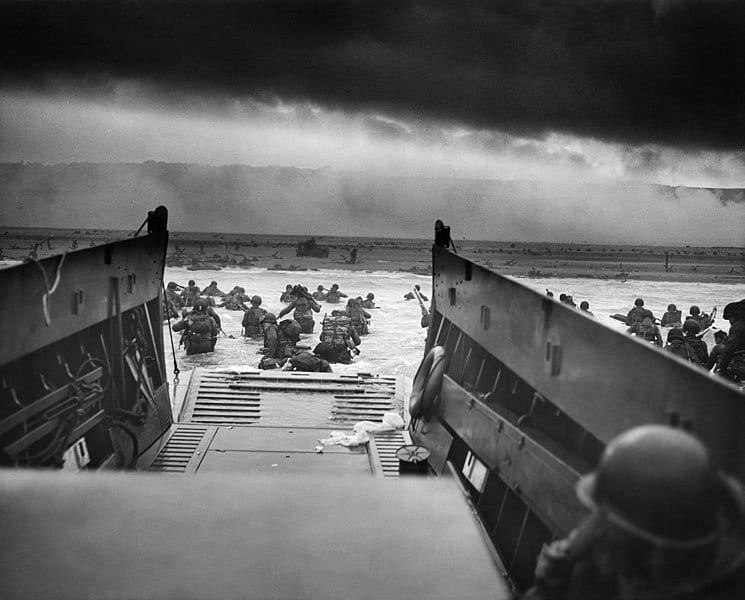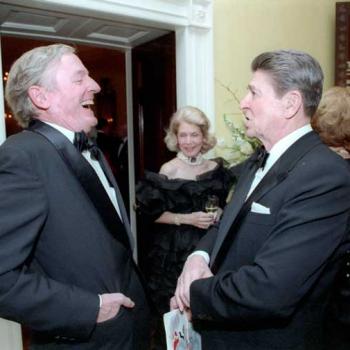One of the sillier of many silly responses to the “men can do better” Gillette ad is a meme:
“No one called it ‘toxic masculinity’ when we were saving the world from Nazis.”
The answer to this is, of course, obvious: fighting Nazis IS fighting toxic masculinity. Or, it should be.
It is interesting, however, how “fighting Nazis” serves a particular rhetorical purpose in arguments like this. As though the function of “Nazis” in the equation has less to do with the actual evil their regime and ideology represent, and more to do with a sphere of permissiveness in which men are allowed to do violence against token targets, in order to display their manly prowess.
The symbolic purpose of the Nazi as target
Nazis serve the purpose, in this case, of justifying stereotypical ideas about male aggressiveness: real men fight Nazis. Or fill in the blank with some other approved villain.
This has been recapitulated in many American films in which Nazis are represented as the “bad guys” mostly because they stand as obstacles in the way of the all-American hero. In the Indiana Jones movies, for instance, there’s little emphasis on the vileness of white supremacist doctrines – Indy’s presuppositions are pretty racist, themselves – but a lot of emphasis on the manly man having some European goons to punch.
The token function of the Nazi not as a symbol of the evils of white supremacy, but rather as a target for approved white American male violence, is especially evident when you consider the many areas in which rhetoric about violence towards Nazis is deemed unacceptable. In the aftermath of Charlottesville, for instance, I saw far more cries for people to denounce the tactics of Antifa than I saw cries for people to denounce the actual Nazis and fascists Antifa was opposing.
Nazis and Americanism
Having been raised on a diet of World War II movies, Americans would, one imagines, be primed to be anti-Nazi across the board. But these were home-grown Nazis, so it was, apparently, different. And we haven’t really been trained to oppose the genuine evils of Nazism: racist and supremacist doctrines, ableism, authoritarianism, homophobia. If we had been, we would more readily do penance for our own sins and genocides. And we would not so easily make excuses for white supremacists in our own government.
One particular response to a post-Charlottesville meme depicting Nazis was revealing. “So anti-American!” one woman stated, about an image of men marching with a swastika.
Anti-American? Well, maybe. Insofar as yes, the American troops fought against the Nazi troops. But the rationale for opposing Nazism is not really reducible to its being anti-American, especially considering how deeply rooted the evils of white supremacy have been in our nation.
Who is allowed to punch Nazis, anyway?
It was especially amusing for me to encounter the meme about toxic masculinity given that I recently experienced a bizarre backlash as a result of a prose-poem I wrote, and had published on On the Seawall, in which I imagine myself enacting violence towards Nazi men.
In reality, I am a pacifist, though I make certain cautious exceptions in cases of defense of the vulnerable, especially defense of the vulnerable against white supremacists. However, I am also a Jewish woman, and in recent months have had to grapple with the rising specters of both anti-semitism and rampant misogyny, including within Catholic circles.
In the prose poem, I imagined myself as a devotee of the goddess Hekate, an image both of the unruly woman, and of protection for the marginalized. Hekate as a symbol is especially relevant considering the history of justifying violence against women by labeling them “witches” – a tradition that exists to this day in the demonization of women who don’t walk the line laid out male authorities. In the “virgin or whore” paradigm of sexist power structures, labeling a woman “witch” was a way of stripping her of the artifices of protection provided by the patriarchy – a protection that always has about it an aura of menace, because it can so easily be removed. Because it depends on the approval of men. Because it depends on women assenting to men when they say “we speak for God.” A woman who dares to go directly to the divine is a threat to this particular dogma of supremacy. Look what they did to Joan of Arc: burned her as a witch.
Women who playfully identify as witches do so in solidarity with these women, against the forces of violent hegemony that throughout history have attempted to appropriate divine authority for the dominant male. This means identifying not only with the unruly women of myth and fairy tale, but with many of the women saints of the church, as well, who suffered specifically at the hands of men.
In the coded system of who can do violence against whom, it is acceptable for the white American man to punch Nazis, but it is not acceptable for the marginalized woman, the weird woman, the unruly woman, to do so. Horrified responses to my prose poem indicated to me not only that there is a large segment of the religious public that is completely clueless about how to read metaphor and symbol, but also that there are a lot of men out there who, given the choice between Nazis on one hand, and liberated women on the other, will automatically side with the Nazis.
This shouldn’t be surprising, considering how readily far-right pundits rise to attack not only unruly women in general, but Jewish women in particular. Is it an accident that in recent months alt-right Catholic publications have printed diatribes against not only myself, but also Simcha Ficher, Jenn Morson, and Dawn Eden – all women of Jewish ethnicity?
That this same demographic should be triggered by rhetoric involving symbolized violence against Nazis is unsurprising. But it should remind us to be on the alert, especially when it comes to whom we choose to be allied with.
image credit: https://en.wikipedia.org/wiki/File:Into_the_Jaws_of_Death_23-0455M_edit.jpg













